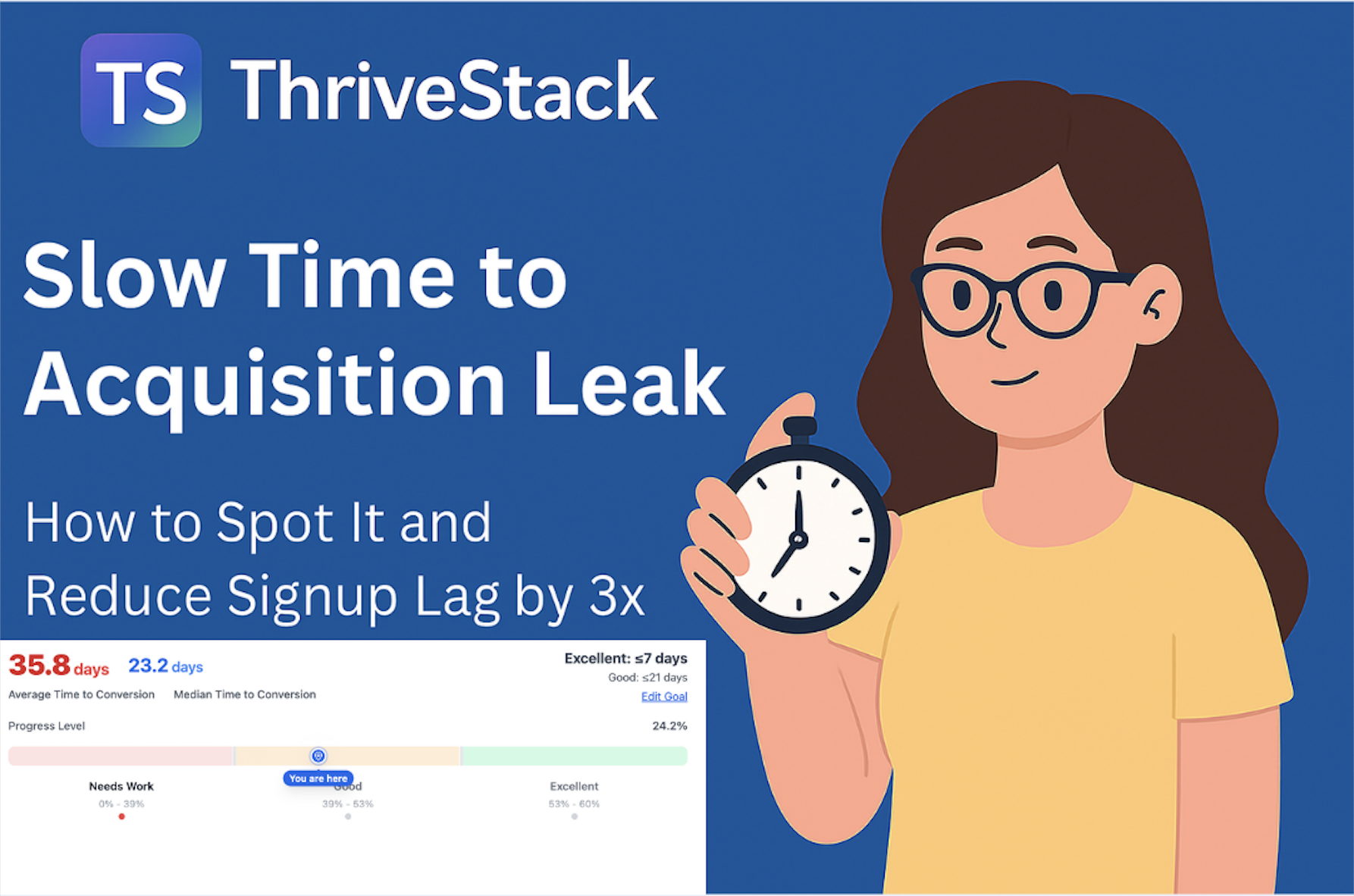Slow Time to Acquisition Leak – How to Spot It and Reduce Signup Lag by 3x
"They finally signed up... 51 days later."
The Leak: What is Time to Acquisition?
Marketing ran a great campaign and brought a visitor to your site on Day 1. The visitor browsed for a bit, then left.
Day 5: another campaign brought them back. Still no signup.
Day 18, Day 23, Day 27: More visits. Still no signup.
Day 51: Finally, the user signs up.
That’s 51 days of potential churn risk. This delay between first touch and signup is called Time to Acquisition (TTA)—and it’s one of the most overlooked growth leaks in SaaS. Every day between that first impression and final conversion is an opportunity for your competitor to swoop in—or for the prospect to simply lose interest.
Why It Matters: The Business Impact
The longer it takes for a visitor to convert, the higher the chances they never will. A long TTA is more than just a delay—it's a sign that your messaging, targeting, or journey design isn't resonating. And while you're retargeting and nurturing, your CAC is creeping up.

Business Impact:
- 3–5x higher CAC for long TTA signups (OpenView)
- 80% of visitors never return after a first visit that doesn't convert (HubSpot)
- 47% of SaaS signups happen within 7 days of first touch—delay beyond this reduces conversion by 60% (Mixpanel)
What Causes Long TTA?
- Lack of urgency: Visitors don't feel a reason to act now, so they browse, bounce, and forget.
- Message mismatch: The campaign promise doesn’t align with the landing page or product value.
- Complex pricing or unclear value: If users can’t understand what they’re getting, they won’t commit.
- Disjointed retargeting: Bringing users back without evolving the narrative creates friction.
- Low-intent traffic: You may be driving volume, but not buyer readiness.
What to Measure: Key Acquisition Metrics
Top 4 Metrics to Track
- Median Time-to-Acquisition (TTA): Track how long it takes users to convert from their first visit.
- Touchpoints to Signup: Measure how many visits/interactions it takes to convert.
- Conversion by Traffic Source: Identify channels that bring in slow or fast converters.
- Signup Lag Buckets: Bucket users by 1-day, 7-day, 30-day+, and 60-day+ conversion windows
Pro Tip: Break down TTA by persona and ICP-fit to isolate the worst-performing user segments.
How to Fix It?
- Compress your value prop: Make the case fast. Users should understand your value in under 15 seconds.
- Progressive profiling: Don’t ask for everything upfront. Remove friction, and qualify later.
- Trigger urgency: Limited-time trials, gated features, or onboarding windows can accelerate decisions.
- Evolve retargeting: Don’t keep showing the same ad. Use visit history to tailor CTAs.
- Build momentum: Reinforce social proof, benefits, and outcomes across follow-ups.
ThriveStack Solution: How We Help
ThriveStack’s Growth Analytics platform enables:
Tracking TTA across all channels: View median time, touchpoints, and signup lag for each source.
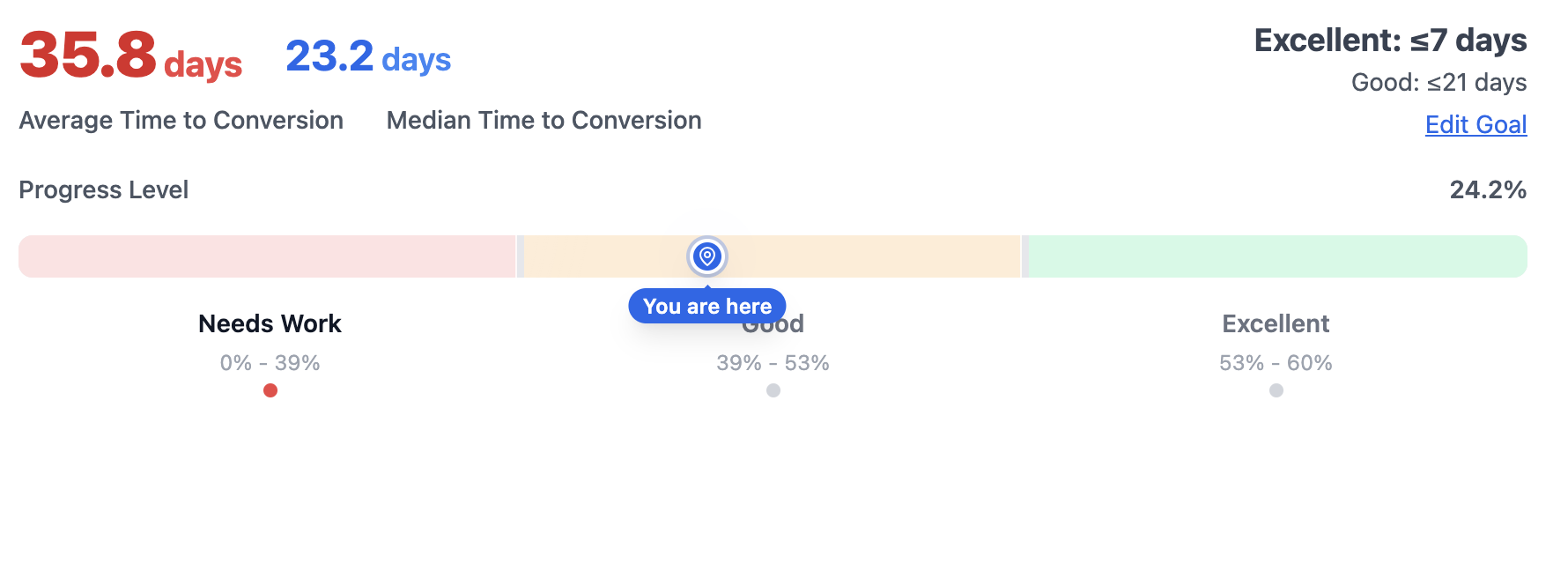
Stitching anonymous-to-user behavior: Connect visitor ID and user ID seamlessly.
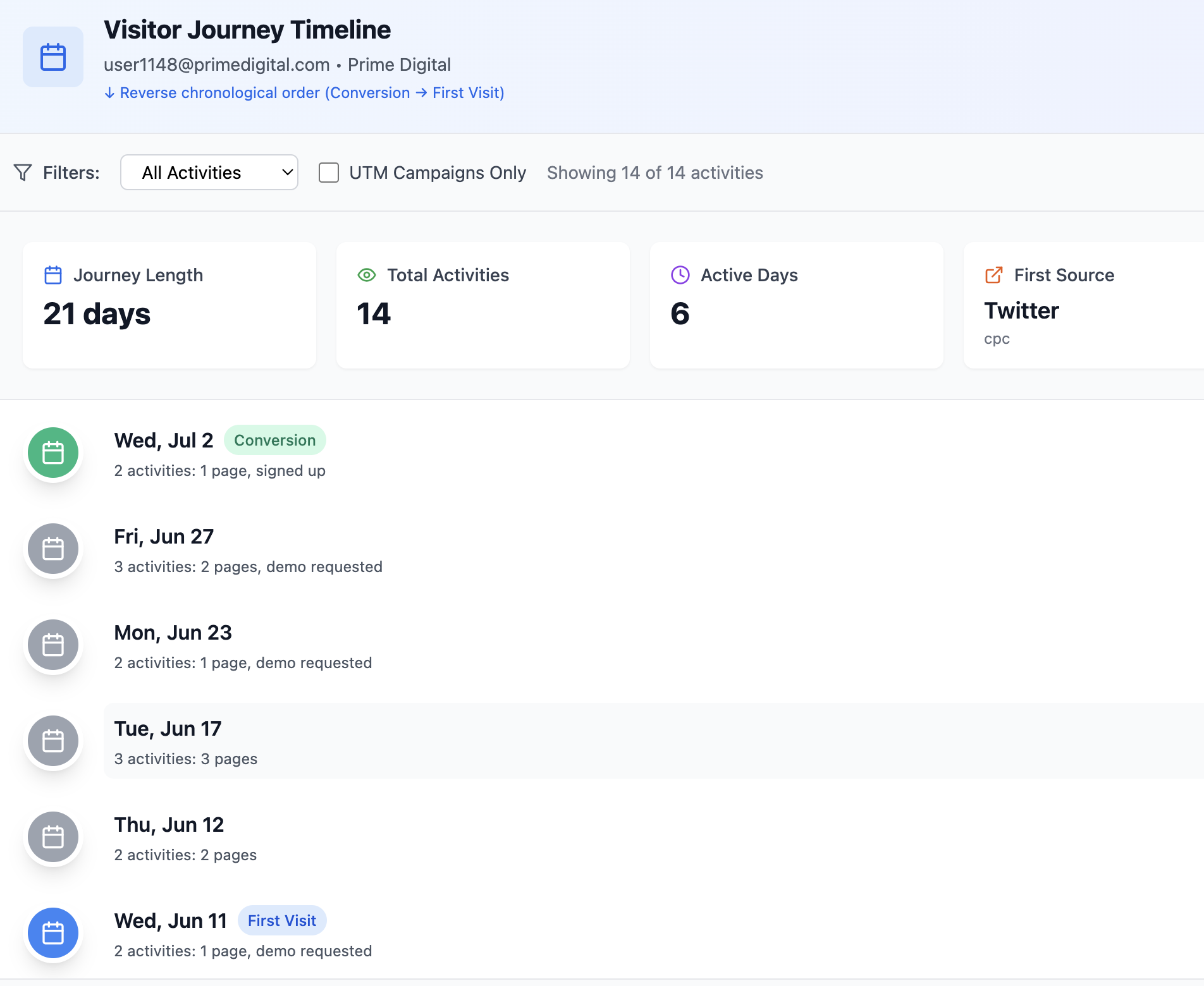
Visual reports: Interactive dashboards to investigate friction zones.
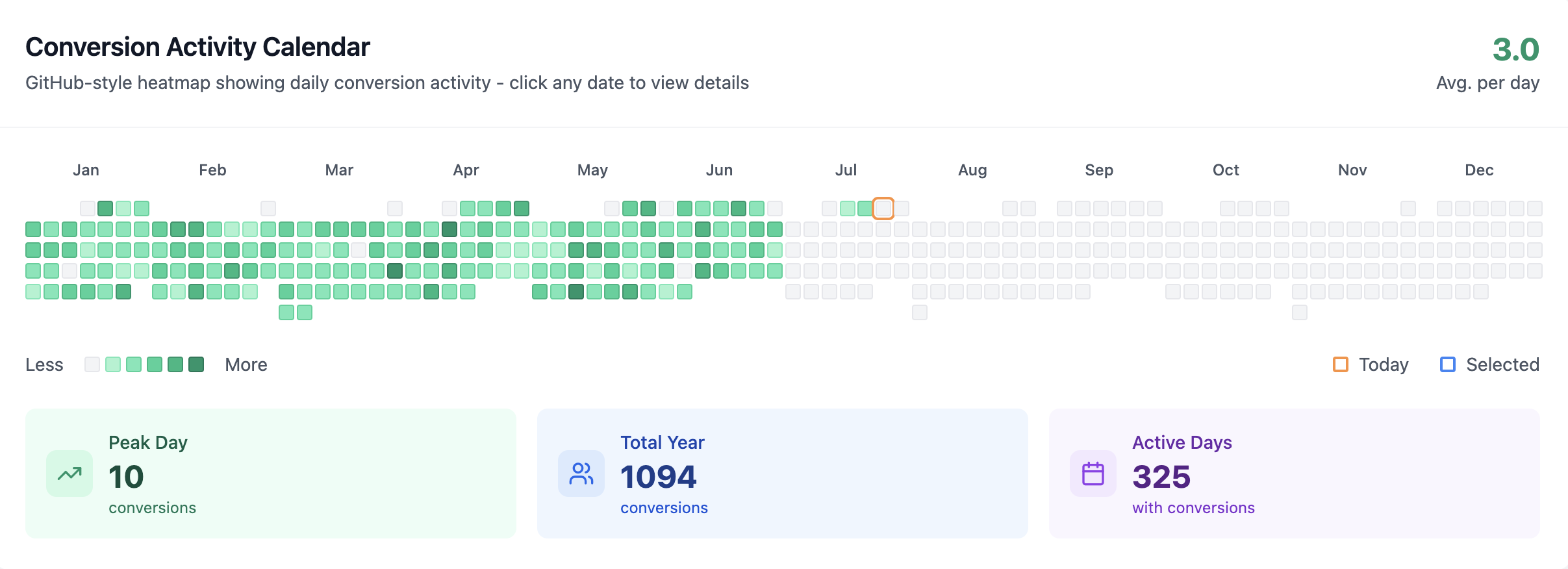
Automated alerts: Triggered when TTA exceeds benchmarks by persona or campaign.
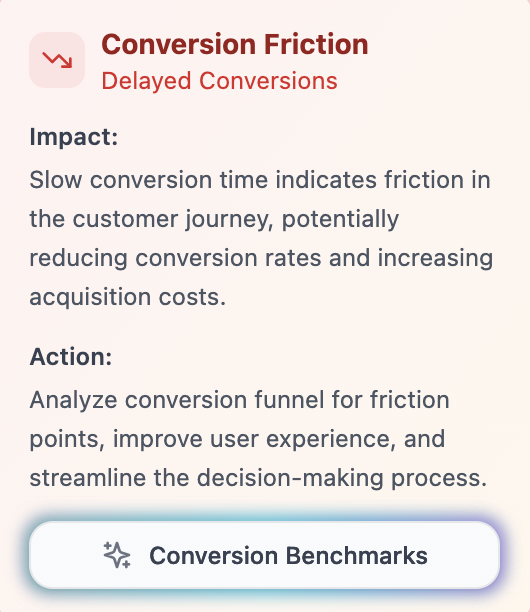
Benchmark comparisons: See how your funnel speed stacks up against others in your category.
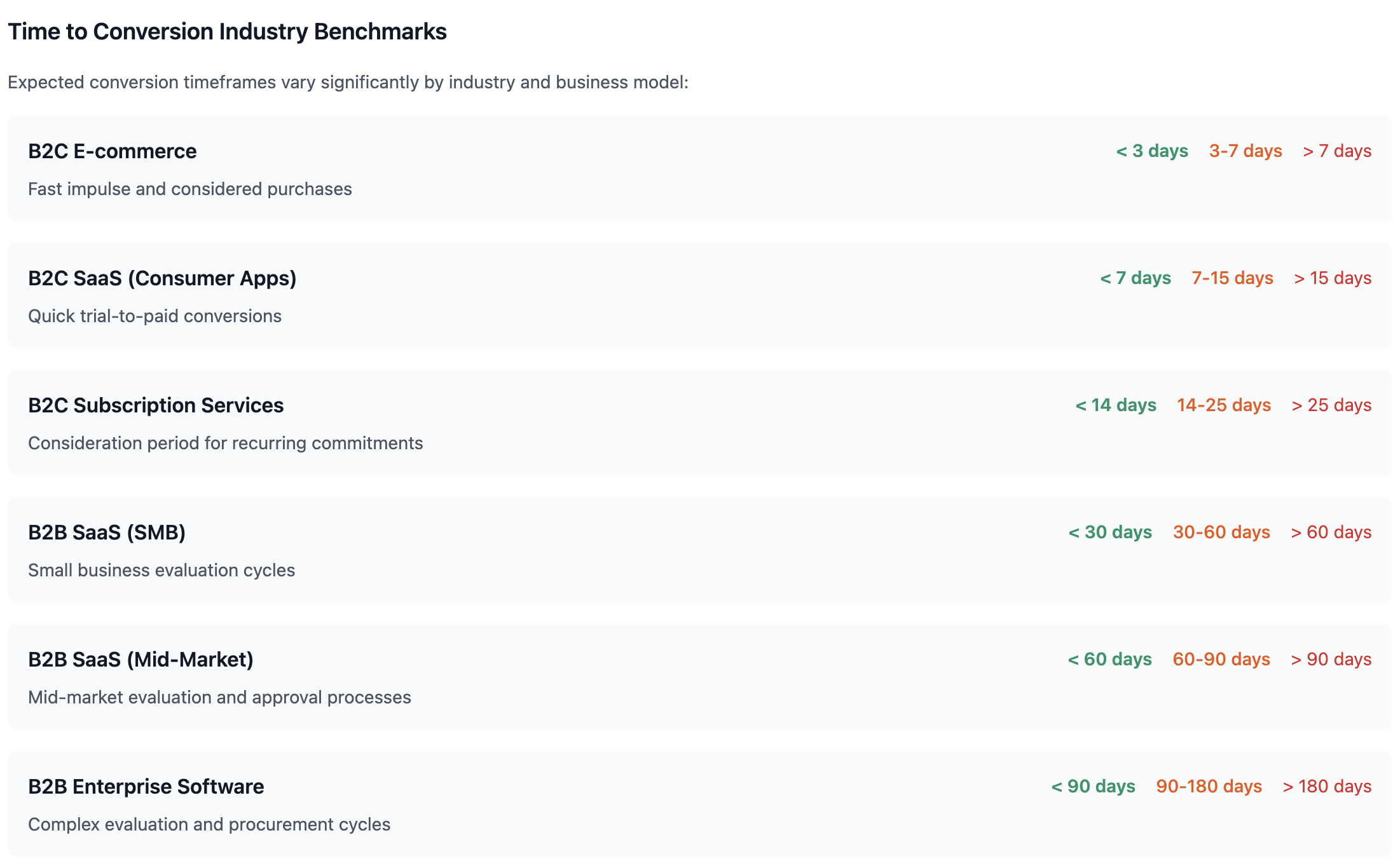
How to Find Slow TTA Leak With ThriveStack?
- Set up ThriveStack Marketing and Attribution Analytics — Connect your campaign data and web traffic in ~2 minutes.
- Enable ThriveStack Product Analytics and Correlation Engine — Unify product usage with attribution and signup tracking in under 10 minutes.
- Use the Time to Acquisition Report — Instantly view time-to-signup for every user or cohort. Drill into individual timelines to pinpoint delays.
Key Question:
How many of your signups took 30+ days to convert—and how many never came back?
Conclusion
Slow Time to Acquisition isn’t just costing you conversions—it’s compounding your CAC, misguiding your funnel insights, and letting high-intent users slip away unnoticed. Every day of delay is a silent leak your competitors love. It’s time to fix it.
Start your free Time to Acquisition audit with ThriveStack—and cut signup lag by 3x in just days.
Frequently Asked Questions
1. What exactly is Time to Acquisition (TTA)?
Time to Acquisition (TTA) measures the delay between a visitor’s first touchpoint (e.g., landing on your site) and their actual signup. A long TTA means prospects are lingering, uncertain, or disengaged before converting.
2. Why does a long TTA hurt SaaS businesses?
Every extra day between first touch and signup increases the risk of churn, distraction by competitors, or lost interest. It drives up Customer Acquisition Cost (CAC) and lowers conversion efficiency.
3. How do I know if I have a Slow TTA leak?
Check your median time-to-signup. If a significant portion of users are taking 30+ days to convert—or never returning—you likely have a TTA leak. ThriveStack dashboards make this lag instantly visible.
4. What are the main causes of a long TTA?
5. What metrics should I track to spot TTA leaks?
- Median TTA (first visit → signup)
- Touchpoints to signup
- Conversion by traffic source
- Signup lag buckets (1-day, 7-day, 30-day+, 60-day+)
6. How can I reduce TTA and accelerate signups?
- Compress your value proposition (explain benefits in <15 seconds)
- Use progressive profiling (ask less upfront)
- Trigger urgency with limited offers
- Evolve retargeting narratives (don’t repeat the same ad)
- Reinforce social proof and clear outcomes

